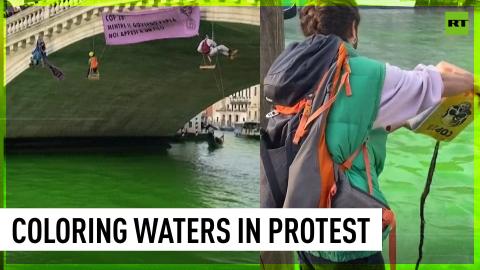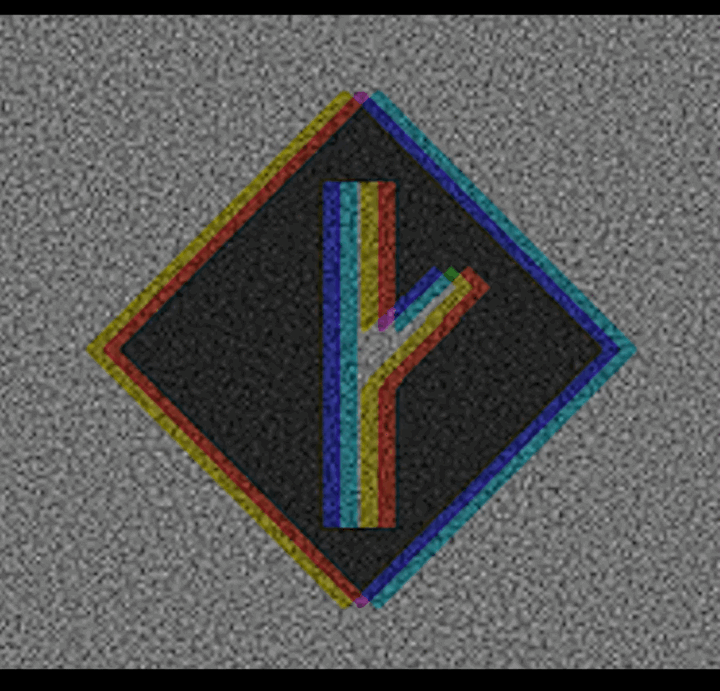Dicyanin Dye
2
0
750 المشاهدات
نشرت في 19 Mar 2021 / في
فيلم والرسوم المتحركة
Dicyanin Dye is the most mysterious and unknown dye, Not much has been known widely nor talked about it or the guy who invented it back in the 20th century. But anyway it is a chemical compound with very weird properties which allows the viewer to see spirits and spiritual energy. It was banned and kept top secret for that reason.
https://m.youtube.com/watch?v=w5X0V5h-2Rg
Also Here's a file which hopefully you guys are able to open it.
text.txt
أظهر المزيد
0



 TheQuartering
TheQuartering
 Styxhexenhammer666
Styxhexenhammer666

 AaronClarey
AaronClarey
 RT
RT
 Ozmosis
Ozmosis


Log in to comment
So It turns out that I couldn’t open it.
Walter John Kilner - Wikipedia
rexresearch.com
Walter J. KILNER
Aura Lens
en.wikipedia.org
Walter John Kilner
Walter John Kilner, M.D. B.A., M.B. (Cantab.) M.R.C.P., etc. (1847–1920) was a medical electrician at St. Thomas Hospital, London. There, from 1879 to 1893, he was in charge of electrotherapy. He was also in private medical practice, in Ladbroke Grove, London.
He wrote papers on a range of subjects but is today best remembered for his late study The Human Atmosphere. In 1883 he became a Member of the Royal College of Physicians. In his spare time he was a keen chess player.
The Human Atmosphere
In 1911 Kilner published one of the first western medical studies of the "Human Atmosphere" or Aura, proposing its existence, nature and possible use in medical diagnosis and prognosis. In its conviction that the human energy field is an indicator of health and mood, Kilner's study resembles the later work of Harold Saxton Burr. However, while Burr relied upon voltmeter readings, Kilner, working before the advent of semiconductor technology, attempted to invent devices by which the naked eye might be trained to observe "auric" activity which, he hypothesised, was probably ultraviolet radiation, stating that the phenomena he saw were not affected by electromagnets.[1]
Glass slides or "Kilner Screens"[2] containing alcoholic solutions of variously coloured dyes, including a blue coal-tar dye called "dicyanin" were used as filters in "Kilner Goggles" which, together with lights, were held to train the eyes to perceive electromagnetic radiation outside the normal spectrum of visible light.[3] After being so trained, one could dispense with the apparatus. Kilner did not recommend merely viewing the subject through these lenses.
According to his study, Kilner and his associates were able, on many occasions, to perceive auric formations, which he called the Etheric Double, the Inner Aura and the Outer Aura, extending several inches from patients' naked bodies, and his book gave instructions by which the reader might construct and use similar goggles.[1]
Francis J. Rebman, a friend of Kilner supported his research in America.[4]
A drawback to Kilner's method was the scarcity and toxicity of the chemicals he recommended. Later, the biologist Oscar Bagnall[5] recommended substituting the dye pinacyanol (dissolved in triethanolamine) but this dye is also not easy to obtain. Carl Edwin Lindgren has stated that cobalt blue and purple glass may be substituted for the dyes used by Kilner and Bagnall.[6]
In 1920 a revised edition of his book was published under the title The Human Aura. Kilner's work was well-timed for the heyday of Theosophy and his findings were incorporated into Arthur E. Powell's book The Etheric Double.[7] Powell rightly made clear that Kilner had expressly differentiated between his own work and the clairvoyance and eastern systems of spiritualism.
Critical reception
In the British Medical Journal (BMJ) a review for Kilner's research stated that although Kilner contended the aura is a "purely physical phenomenon", evidence does not support this view. Scientists from the BMJ attempted to replicate Kilner's experiments but the results were negative. The review concluded that "Dr. Kilner has failed to convince us that his "aura" is more real than Macbeth's visionary dagger."[8]
American scholar J. Gordon Melton has written:
"Kilner's research was largely dismissed by later researchers on light and perception, and the results he reported were seen as artifacts of the observer's own optic process rather than reflective of any emanation being produced by the subject being observed. These findings did not prevent the marketing of Kilner goggles, advertisements for which appeared in Esoteric periodicals as late as the 1970s." [9]
Skeptical investigator Joe Nickell has described Kilner's research as pseudoscience, noting that he "uncritically accepted the validity of non-existent N-rays and clairvoyant powers."[10]
References
Kilner, Walter J., The Human Atmosphere, or the Aura Made Visible by the aid of Chemical Screens, 1911, reprinted as "The Human Aura" by Citadel Press, NY, 1965, ISBN 0-8065-0545
The Aura, by Walter J. Kilner. Introd. by Sibyl Ferguson. New York, S. Weiser, 1973.
Raymond J. Corsini The Dictionary of Psychology, Psychology Press 1999 p.524
Williams, William F. (2002). Encyclopedia of Pseudoscience: From Alien Abductions to Zone Therapy. Facts on File Inc. pp. 176-177. ISBN 978-0816050802
The Daily Journal-Gazette from Mattoon, Illinois. August 19, 1911. p. 3. Rebman published a booklet on the subject The Human Aura: A Brief Explication of Dr. Kilner's Discovery of Means for Observing the Human Atmosphere. (1912).
Bagnall, Oscar. (1937). The Origin and Properties of the Human Aura. Kegan Paul, Trench, Trübner and Company.
Lindgren, Carl Edwin. (2005). Capturing the Aura. Blue Dolphin Publishing. p. 16. ISBN 978-1577330721
Powell, Arthur E. (1925). The Etheric Double and Allied Phenomena. Theosophical Publishing House.
The Human Atmosphere by Walter J. Kilner. British Medical Journal. Vol. 1, No. 2662 (Jan. 6, 1912), pp. 21-22.
Melton, J. Gordon. (2013). The Encyclopedia of Religious Phenomena. Visible Ink. p. 17. ISBN 978-1578592098
Nickell, Joe. (1993). Looking for a Miracle: Weeping Icons, Relics, Stigmata, Visions & Healing Cures. Prometheus Books. pp. 210-211. ISBN 1-57392-680-9
www.sacred-texts.com
www.mysticknowledge.org
The Human Atmosphere
by Walter J. Kilner
[ PDF ]
THE AURA OF HEALTHY PERSONS // THE ETHERIC DOUBLE // THE INNER AURA // OPTICAL PROBLEMS // THE EFFECTS OF THE DIFFERENT FORCES UPON THE AURA // COMPLEMENTARY COLOURS // THE OUTER AURA IN DISEASE // THE INNER AURA IN DISEASE // THE USE OF THE COMPLEMENTARY COLOURED BANDS IN DISEASE // THE AURA DURING PREGNANCY
books.google.com
New Science and Invention in Pictures ( 1921 )
The Human Aura
by Hugo Gernsbach
books.google.com
Application of Dicyanin to the Photography of Stellar Spectra
By Paul Willard Merrill
US4186144
Process for the production of cyanopinacolone
mindmachine.ru
Glasses PranaVision Stalker
Glasses vision of aura and subtle world.
Adjustment of the spectrum can be done in two ways:
1. Loosening the screws on the side of the eyepieces, to carry out the rotation of the eyepieces of glasses with handles.
2. Fixing the eyepiece in the selected position, make small movements of the head in the up-down direction.
The differences between models and Econom Stalker type lenses - they work on the uptake and lighter for street lighting. The main distinguishing feature of the model Stalker is the ability to adjust the spectrum of the blocking of the incoming light. The ability to adjust the spectrum was made possible by changing the angle of incidence to the surface with special reflective filters...
The ability to adjust the spectrum from blue to violet and red, while maintaining the bandwidth of the optical filter in the ultraviolet region, gives spectra almost all the range of dyes used for seeing auras and energies of the subtle world. For example, one of the most effective dyes dicyanin, corresponds to the 90° angle of incidence on the filter surface.
hatch.kookscience.com
Dicyanin (synthetic dye)
Dicyanin is a synthetic blue dye derived from coal tar that was used for sensitizing photographic plates, first manufactured in the early twentieth century by the dye works of Meister, Lucius & Brüning at Höchst (near Frankfurt), Germany. It became associated with auric research thanks to the experiments of Walter J. Kilner, who used the dye (which he also referred to as spectauranine) in the manufacture of his Kilner screens.
Preparation
In Dyestuffs & Coal-Tar Products (1915), the authors — Beacall, Martin, et. al. — relate that the dicyanin is a quinoline dye of the cyanine type, reporting it is "prepared by action of KOH [potassium hydroxide] + atmospheric O [oxygen] on α-γ-Dimethylquinolinium salts," for intended use as a sensitiser of "silver bromide gelatine plates up to the red line α, with a strong minimal effect between E and F," specifically noting it is "used as a red sensitiser for scientific work, but the prepared plates are not very sensitive."[1]
Later, in Constitution of the Dicyanines (1924), Mills and Odams demonstrated dicyanine is a carbocyanin, giving a formula of 2,4-dimethylquinoline iodoethylate and sodium methylate in methanol[2] (for 1,1'-diethyl-2,4'-carbocyanine iodide).[3]
Studies
Kenneth, C. E.; Wratten, S. H. (January 1908), "Plates Sensitised with Dicyanin and Photography of the Infra Red", The Photographic Journal (London: Royal Photographic Society of Great Britain) 32 (1): 25-37
Kilner, Walter J. (February 1912), "The Shifting of the Chromatic Focus of the Eye by Use of a Dicyanin Screen", Archives of the Roentgen Ray (London: Rebman) 16 (9): 344-346, 351-353
Merrill, Paul W. (April 1919), "Application of Dicyanin to the Photography of Stellar Spectra", Bulletin of the Bureau of Standards (Washington, D.C.: U.S. Dept. of Commerce) 14 (4): 487-505
Walters, Jr., Francis M.; Davis, Raymond (1922), Dicyanin, "Studies in Color Sensitive Photographic Plates and Methods of Sensitizing by Bathing", Scientific Papers of the Bureau of Standards (Washington, D.C.: U.S. Dept. of Commerce) 17 (422): 366-367
References
Beacall, Thomas; Sand, H. Julius; Martin, Geoffrey; Challenger, F. (1915), "Photographic Chemicals: Quinoline Dyes", Dyestuffs & Coal-Tar Products: Their Chemistry, Manufacture and Application; including Chapters on Modern Inks, Photographic Chemicals, Synthetic Drugs, Sweetening Chemicals, and Other Products Derived from Coal Tar, London: C. Lockwood & Son, p. 139
Mills, William Hobson; Odams, Ronald Charles (1924), "The Cyanine Dyes, Part VIII. Synthesis of a 2:4'-Carbocyanine. Constitution of the Dicyanines", Journal of the Chemical Society, Transactions 125: 1913-1921
[a][a]www.docdroid.net[/a][/a]
The Synthesis of Dicyanine A
By S. Palkin
[a][a]www.docdroid.net[/a][/a]
Synthesis of Photosensitizing Dyes ( II ), Dicyanine A\
A. Mikeska, et al.
[a][a]www.docdroid.net[/a][/a]
TetraMethyl-Quinolines
L.A.. Mikeska, E. Adams
Cyanopinacolone & Cyanogen Preparation Patents
CA1093097A
PROCESS FOR THE PRODUCTION OF CYANOPINACOLONE
Abstract
Cyanopinacolone is produced by reacting pinacolone with about 1.0 to about 1.2 molar equivalents of chlorine in methanol and further reacting the resulting monochloropinacolone with about 1.0 to about 1.2 molar equivalents of an alkali metal cyanide in methanol.
US5017356A
Preparation of cyanogen from glyoxime
Abstract
Cyanogen is prepared from glyoxime by reaction with acetic anhydride to form N,N'-diacetoxyglyoxime which is then pyrolyzed to cyanogen.
NL7105148A
Cyanogen preparation
Abstract
Cyanogen is produced by catalytic oxidation of HCN according to BE 764361 by oxidation with H2O2 in the presence of CuSO4 with or without ferric sulphate. The ferric sulphate may be prepared in situ by the reaction of H2O2 with ferrous sulphate. The Cu++ or Fe+++ ions may be recovered by precipitation with alkaline or alkaline-earth carbonates in the cyanogen-free reaction-soln. The cyanogen-free catalytic soln. may be recycled to the reaction step after the water introduced with the H2O2 has been distilled off.
BE766248R
Cyanogen preparation
Abstract
Cyanogen is produced by catalytic oxidation of HCN according to BE 764361 by oxidation with H2O2 in the presence of CuSO4 with or without ferric sulphate. The ferric sulphate may be prepared in situ by the reaction of H2O2 with ferrous sulphate. The Cu++ or Fe+++ ions may be recovered by precipitation with alkaline or alkaline-earth carbonates in the cyanogen-free reaction-soln. The cyanogen-free catalytic soln. may be recycled to the reaction step after the water introduced with the H2O2 has been distilled off.
US4503025A
Process for preparing dicyanogen
Abstract
Dicyanogen is prepared by reacting trimethylsilyl cyanide with cyanogen halides in the presence of Lewis acids.
JPH07315831A
METHOD FOR PREPARING AMMONIA-FREE CYANOGEN GAS
Abstract
PURPOSE:To surely trap ammonia and to obtain an ammonia-free cyanogen gas by a simple procedure, by treating a cyanogen-containing mixed gas blended with an ammonia gas by an acidic ion exchange resin. CONSTITUTION:A cyanogen-containing mixed gas blended with an ammonia gas is led to a container charged with an acidic ion exchange resin and passed through the container so that the mixed ammonia gas is caught by the ion exchange resin to give an ammonia-free cyanogen gas. This method is applicable to the case of <11>C labeled cyanide-containing gas in which the cyanogencontaining mixed gas is formed from <11>C labeled methane.
GB579785A
Production of cyanogen
Abstract
Cyanogen is obtained by reacting hydrocyanic acid with chlorine or cyanogen chloride in the vapour phase at an elevated temperature. The reaction may be effected in an empty glass or quartz tube having smooth walls at a temperature not lower than 600-700‹ C., or in a reaction chamber packed with inert solids, but preferably, the reaction mixture is passed over a surface-active material at a temperature of 200- 1,000‹ C. Suitable surface-active materials are active carbon or silica gel. If the reaction is conducted under essentially adiabatic conditions, the gases are fed to the reaction vessel at temperatures suitably below the final reaction temperature, yet high enough to initiate the reaction. Preferably when operating adiabatically the reaction mixture is diluted with partially cooled off gas from the reaction chamber, thus recycling part of the product. The hydrocyanic acid may be employed in slight stoichiometrical excess. The offgas is cooled, scrubbed with water to remove hydrochloric acid as a concentrated solution and dried. Finally, the cyanogen may be purified from its slight content of hydrocyanic acid by rectification.
GB1306528A
PRODUCTION OF CYANOGEN
Abstract
Cyanogen is obtained by initially reacting HCN and C1 2 on a surface active catalyst (i.e. carbon) and then treating the gas mixture still containing HCN with 1À0 to 1À1 mols of Cl 2 per mol of HCN on a surface active catalyst at 195-800‹ C. for 10 seconds to 0À01 second. In a preferred embodiment the initial stage is carried out in two steps. In the first step the HCN and Cl 2 are reacted in a mole ratio of 1 : 1 or less and a residence time of greater than 10-3 second and the residual amount of HCN required to use up the excess Cl 2 is directly introduced to the second reactor together with the gas mixture from the first reactor.
CN206566534U
Neighbour's cyanogen stills
Abstract
The utility model discloses a neighbour's cyanogen stills, including barrel, agitator, thermowell, cover and speed reducer, be equipped with the cover directly over the barrel, the cover passes through sealing device with the barrel to be connected, and the agitator upper end links to each other with the speed reducer, and the lower extreme passes through the cover trompil and extends to go into inside the barrel, thermowell open position extends to go into inside the barrel in barrel upper end, thermowell, then, the utility model discloses stills distillation heat transfer even speed is fast, and distillation efficiency is high, from having saved the resource to a certain extent, and be difficult to the scale deposit in the cauldron, the time of not only having protected the cauldron body but also having avoided the clearance to cause is extravagant.
GB845471A
Method of preparing cyanogen
Abstract
A gaseous mixture of HCN and Cl2 is ignited in the presence of H2 at at least 1200 DEG C. to form cyanogen which is subsequently recovered. Cl2, HCN and H2 in molar ratio 1:1.5-2.0:0.25-2.0 respectively, preheated if desired to 200 DEG C.-600 DEG C. are supplied either separately or variously premixed e.g. HCN and Cl2 may be premixed to a burner, where they p are ignited either by an oxy-hydrogen torch, an electric spark or a heated Pt wire, and burn at a temperature of at least 1200 DEG C. usually 1200-1800 DEG C. Combustion products containing cyanogen formed in a reaction time of 0.001-0.00001 seconds are removed from the burner and passed say through a water scrubber to remove acidic and other impurities, cyanogen being recovered as the resultant purified gas. The combustion may be carried out in the presence of an inert gas e.g. N2 or He and preheating of the separate gases or gaseous mixture is obtained either by heat exchange with the combustion products leaving the burner or by independent electrical heating.
JP2000178779A
PRODUCTION OF CYANOGEN
Abstract
PROBLEM TO BE SOLVED: To improve a conversion rate by electrolytically oxidizing cyan ion in a cyan ion-containing solution buffered to a specific pH range. SOLUTION: The cyan-containing solution is buffered with a buffer such as phosphoric acid/boric acid/acetic acid/sodium hydroxide or the like to pH 4-7. As the cyan ion source, a metallic cyanide such as sodium cyanide generating cyan ion by dissolving in water is used and the cyan ion concentration in the solution is controlled to 0.01-10 mol%. A redox active metallic ion such as Cu ion, iron ion is further incorporated in the cyan-containing solution. A titanium electrode coated with a noble metal oxide or various kinds of carbon electrodes are used as the electrode material of the anode and the cathode. The electrolytic reaction is performed usually under a condition of a fixed current and a fixed voltage at 0.1-500 mA/cm2 current density and room temp. to 100 deg.C. Gaseous nitrogen or the like is passed through the electrolyte and the electrolytic cell as many small bubbles and the generated cyanogen is carried to the outside of the system.
GB1338025A
PRODUCTION OF CYANOGEN
Abstract
Cyanogen is produced by catalytic oxidation of HCN with H 2 O 2 in the presence of CuBr 2 , CuCl 2 , Cu(CN) 2 , Cu(NO 3 ) 2 , or CuSO 4 . Fe3+ salts may also be present, with anions corresponding to the Cu salt (Fe 2 (SO 4 ) 3 may be formed in situ from FeSO 4 ). The HCN may be used as a gas, liquid or aqueous solution, and the H 2 O 2 as a 3-90% aqueous solution or as an organic solution. The temperature may be 0-100‹ C. and the pressure 1-5 atm. An organic solvent, e.g. tetramethylene sulphone, ethyl acetate or n-propyl acetate, may be present. The process may be operated continuously, the catalyst solution being distilled to remove water and recycled, any HCN and CN evolved during distillation also being recycled. Alternatively, the solution, optionally after distillation, may be treated with alkali metal or alkaline earth metal carbonate, e.g. CaCo 3 , to precipitate Cu and Fe carbonates which may then be converted, e.g. into sulphates with H 2 SO 4 , and recycled. CNCl is formed as by-product in Examples 6 and 7.
US3302996A
Process for preparing cyanogen
CA186179A
CYANOGEN PRODUCTION
US2075046A
Photographic emulsion containing supersensitized pinacyanol
Your Support Maintains this Service --
BUY
The Civilization Kit
... It's Your Best Bet & Investment in Sustainable Humanity on Earth ...
Ensure & Enhance Your Survival & Genome Transmission ...
Everything @ rexresearch.com on a Thumb Drive or Download
scarenormal.com
How do i get my hands on some of these lenses? and how can we send some to POPP for paranormal Popp?